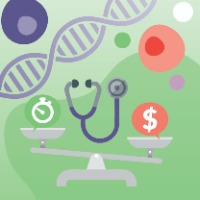The T cell therapy field faces preclinical and translational R&D challenges as it targets more complex diseases
Cell & Gene Therapy Insights 2021; 7(1), 71–80
10.18609/cgti.2021.017
Cell-based therapies offer potentially effective treatment options for a variety of diseases with ever-increasing complexity and new technologies being developed aim to increase the applicability of these therapies. Here we outline some of the technical and procedural challenges facing the development and use of T cells as therapeutic agents for the treatment of cancers. There is good evidence that T cells have the capacity to control the progress of cancer in some cases, but efforts to exploit this activity to enable a broader patient population to benefit are hampered by both the intrinsic nature of T cell receptors (TCRs) and the antigenic targets they recognize (processed peptide fragments presented by human leukocyte antigens, pHLA). Assessing the suitability of a given antigenic target for the development of T cell immunotherapies requires careful and extensive mapping of antigen expression across different tissue and cell types at the gene, protein and processed-peptide levels. Once technologies for isolating optimal, fully characterized, cancer antigen-specific TCRs are in place, a significant challenge is testing the activity of TCR-T cells in the preclinical setting to ensure the cells appropriately distinguish between healthy and cancer cells. The absence of suitable animal models requires extensive in vitro testing against panels of HLA-typed primary human cells and tumor cell lines healthy tissue. Indeed, the limited availability of human clinical samples (tumor, healthy tissue) is itself a challenge which has driven the development of sensitive technologies for single-cell analysis. Despite the hurdles, progress is being made and the numerous TCR-T clinical development programs now underway begin to generate encouraging clinical responses against solid tumor indications giving us reason to be optimistic that this therapeutic class will ultimately provide benefits to a broader number of patients.
